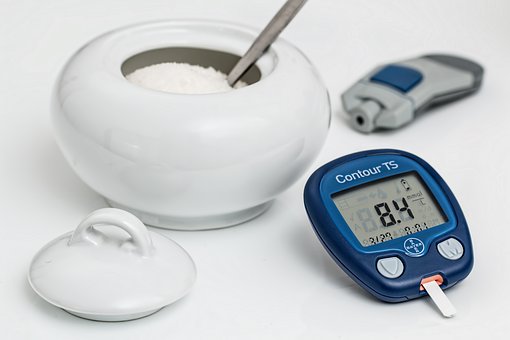Saturday, March 4, 2023
Did you know that you are pregnant and would you like to know the expected date of delivery? The Pregnancy and Childbirth Calculator is designed for this. Learn in this article how to use the pregnancy and childbirth calculator and how valid its results are.
What is the pregnancy calculator?
The pregnancy calculator is among the various methods for determining the expected date of delivery for a pregnant woman by relying on her last menstrual cycle, date of pregnancy, ovulation, or ultrasound. Knowing the date of delivery helps the mother prepare, plan and monitor her health and the health of her baby. However, it is only an estimated date, and a small number of children are born on the specified date.
Benefits of using a pregnancy calculator
The benefits of using a pregnancy calculator vary depending on whether it is used by professionals or parents, and its benefits include:
-
For healthcare professionals
The Pregnancy Calculator helps healthcare professionals know when the baby is due, which enables them to monitor and track the baby’s development, to avoid or prevent causes that may trigger preterm labor or labour.
Determining the expected date of birth can help both parents and the mother, in particular, to prepare for childbirth and plan to receive her child, and then obtain the necessary prenatal medical and health care, including conducting the necessary tests and obtaining the necessary vitamins to maintain her health and the health of her fetus throughout the pregnancy until the date of birth. .
How to use the pregnancy calculator
The period of full pregnancy ranges between 37 and 40 weeks, and this makes matching the expected date of birth with the actual date of birth a rare occurrence, as a result of many factors that may change the expected date of birth. This estimated date of birth is recognized by:
First: Determine the date of the last menstrual period
The pregnancy calculator can be used to find out the date of delivery once you have determined the date of the last menstrual period before pregnancy, and the pregnancy calculator will provide you with the expected date of delivery. Women usually resort to this method because it is easy, but the date given to a pregnant woman may not always be accurate, especially if the pregnant woman suffers from menstrual disorders.
Second: Determine the date of conception
The detection of the expected date of birth is by determining the date of conception, specifically the date of ovulation, which usually occurs about 14 days after the first day of the menstrual cycle, and this method is considered accurate only when determining the exact day of pregnancy, because the date of ovulation alone is not sufficient to confirm the date of pregnancy Especially since sperm may settle in the fallopian tubes even after the scheduled date for ovulation
Third: ultrasound
The doctor can determine the expected date of birth using ultrasound during the first three months of pregnancy, specifically before the 13th week. Ultrasound enables the measurement of the fetal coronal-breech length, which is its length from the bottom of the torso to the top of the head. Or through the use of bilateral diameter ultrasound, which measures the diameter of the baby’s skull, and ultrasound can be considered more accurate compared to other methods.
Ultrasound examination is usually requested in cases such as irregular menstruation, inability to determine the date of menstruation, or the occurrence of pregnancy despite the use of contraceptives.
Factors affecting the date of birth
Many factors contribute to bringing forward or delaying the expected due date, including:
1. Pregnancy with twins or triplets
Determining the expected date of birth when pregnant with one child is different from the case of pregnancy with twins or triplets, for this reason, doctors do not take the pregnancy calculator into account, but it is necessary to use ultrasound as well to ensure the possibility of childbirth before or after the expected date.
2. A previous pregnancy
The date of birth in the previous pregnancy can play a role in determining the pre-birth schedule for the pregnant woman, as it is always noted that pregnant women usually give birth in the same time period for each pregnancy, especially if the time period for the first pregnancy and the second pregnancy is similar, which gives an impression to the woman The pregnant woman confirms that her next birth will be in the same period of time, even if the expected date of birth is determined by adopting the pregnancy calculator.
3. The risk of premature birth
The risk of premature birth is one of the factors responsible for changing the date of the expected birth, whether by bringing it closer or delaying it. A pregnant woman may be at risk of premature birth as a result of smoking, vaginal bleeding, diabetes or high blood pressure.
4. Disorders during pregnancy
Some factors that occur during pregnancy can cause a change in the expected date of birth, and these factors include a small or large weight of the fetus at one of the stages or months of pregnancy, or as a result of an abnormally high uterine fundus, or as a result of low levels of proteins produced by the child during the period pregnancy.
For this reason, it is always advised to consult a specialist in obstetrics and gynecology when wanting to become pregnant and to follow up with him during pregnancy until childbirth, in order to avoid possible diseases or disorders that may cause health complications for the pregnant woman and the fetus, and then ascertain the factors that may affect the expected date of birth.
Read also: Low back pain during pregnancy: here are 5 healthy ways to deal with it and reduce it
Potential limitations and risks of using a pregnancy calculator
There are no potential risks to using the pregnancy calculator, however, it is always recommended to perform early ultrasound examinations, especially in the first months of pregnancy, to confirm the expected date of delivery determined by the pregnancy calculator, especially when in doubt about the date of the last menstrual period that you relied on to determine your due date or if Your menstrual cycle is irregular. In this case, the ultrasound may indicate that the due date is about a week or more later. This will enable the doctor to track the development of the fetus throughout the pregnancy.
Read also: Bleeding from the vagina during pregnancy..When does your pregnancy become in danger
Why is pregnancy calculated from the first day of the last period?
The expected date of birth is usually calculated based on the date of conception, but this may be difficult given that most women do not know the confirmed date of pregnancy as a result of not knowing the date of ovulation, which may occur several days after its due date, because sperm may live for up to Up to 5 days inside the fallopian tubes, until the egg is released and fertilized by a sperm.
That is why the calculation of the date of birth is chosen based on the first day of the last menstrual period, given that the date of the last menstrual period is known to the pregnant woman. And because pregnancy lasts for a period of approximately 40 weeks, starting from the first day of the last menstrual period, and the start of pregnancy is usually calculated two weeks before, because your last menstrual period is two weeks before the occurrence of pregnancy, which explains the adoption of calculating 40 weeks as a duration for full pregnancy instead of 38 weeks.
Frequently asked questions that may interest you
Is the pregnancy calculator program correct?
The duration of pregnancy ranges from 37 weeks to 40 weeks, a period where many factors may interfere in making the expected date of pregnancy between these two periods. Although the pregnancy calculator gives you a specific time date, it is not always correct, and 5 pregnant women out of 100 pregnant women can give birth at the expected date of delivery, which is equivalent to 5% of the cases in which the pregnancy calculator program is correct.







